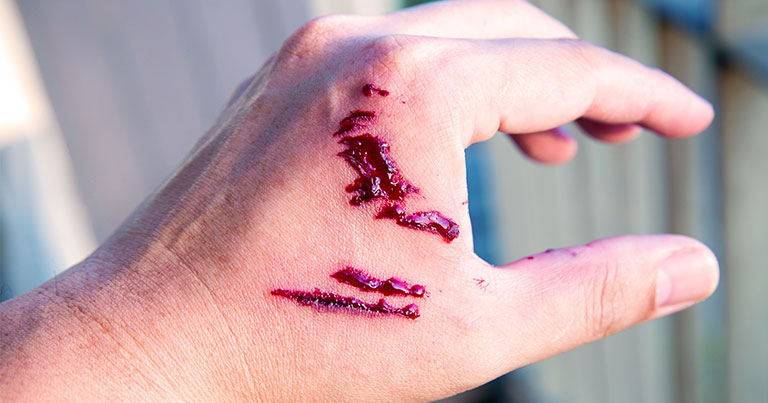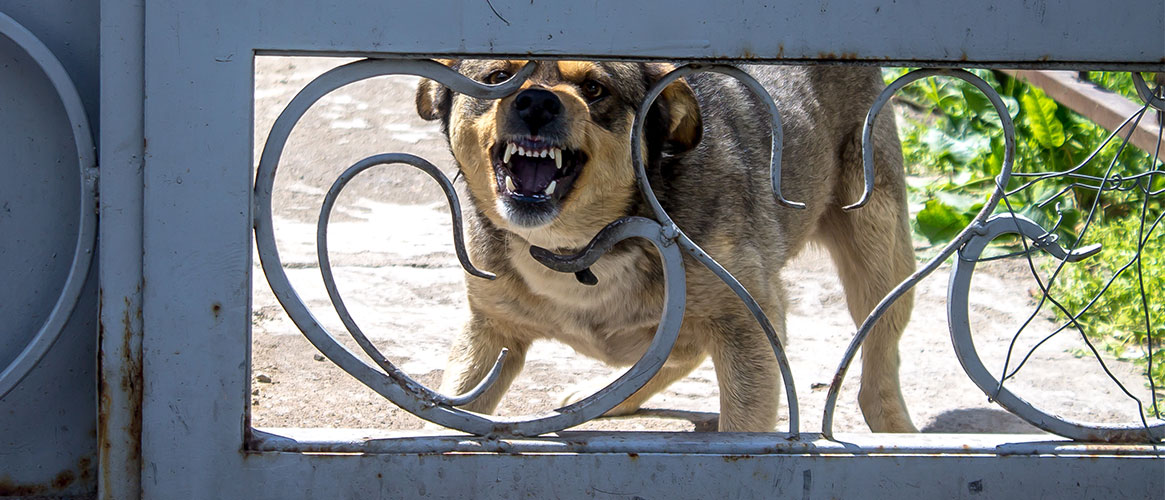More than 800,000 Americans receive medical attention for dog bites each year. Seventy-eight percent of animal-caused injuries to parcel delivery drivers are puncture wounds. These can be potentially life-threatening injuries. Infections, blood loss, permanent nerve damage, rabies, and other secondary complications can come from this type of injury. If you think only certain breeds of dog bite, think again. All dogs are capable of biting. Learn how to avoid and prevent this from happening.
What your employees need to know about avoiding dog bites
Dogs bite for several reasons: first, to defend their space or something they are protecting; second, when they are afraid or startled; third, when they feel threatened. Be very cautious if the dog has puppies, is sleeping, or seems sick or injured. If an animal is eating, playing with a toy or chewing a bone, stay away. Knowing what to watch for and avoiding these triggers can keep you safe.
What your employees need to do to avoid a dog bite
Pay attention and know the signs of stress, which may lead to a bite. If a dog appears tense and is growling or showing teeth, be cautious. At first, dogs will show behaviors which are meant to calm themselves. Signs such as yawning, lip licking, or panting tell us they want to be left alone. Next, the animal may tuck their tail, flatten the ears, and cower. When these behaviors are ignored, the dog may begin to growl, bare their teeth, and eventually bite.
- Calming signs show the animal is nervous.
- Flattening ears, tucking the tail, eyeing or crouching means the dog should be left alone.
- Growling and bearing teeth is the last warning before a potential bite.
It’s important to avoid any dog on the loose and assume a dog behind a fence or a door can get out. Plan a path of escape before it’s needed. Anyone feeling in danger shouldn’t hesitate to delay the delivery or contact the recipient for other safe options.

Employees must act immediately if bitten by a dog to reduce the chance of contracting infection or disease
If an employee is bitten, they should do the following as soon as possible:
- Wash the wound with soap and water and bandage it.
- See a doctor. Even if the attack results in a small scratch or no mark at all, it’s important to remember that animals can have deadly bacteria or possibly rabies which can quickly lead to an infection or fatal consequences.
- Report the animal attack to the authorities. You may save someone else’s life.
What to cover at your safety meeting on avoiding dog bites
Discuss the importance of staying calm when an employee encounters a dog. Also stress the importance of looking down and not making eye contact with the dog, and saying “NO!” in an authoritative voice.
Demonstrate the steps an employee can take if they are attacked. Those include:
- Fighting back. Employees can defend themselves by hitting the dog on the nose, throat, or back of the head.
- Calling out for help.
- Making hands into fists to protect the fingers from getting bitten.
- Using body weight to press the dog into the ground.
- Immobilizing the head to avoid the mouth and teeth.
- Letting the dog run away if it gets scared.
- If an employee is knocked down, how to curl up in a ball and protect the vital organs such as the face, neck, and head.
Know the signs to watch for that indicate that there is a threat. Remember the steps that will help de-escalate the situation. If fighting back is the only option, protect vital organs and yell for help. This is one way to reduce the severity of any injuries.
Remind your employees to keep vigilant during every delivery. Make sure they don’t become another statistic.

